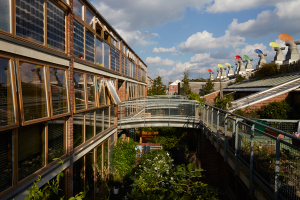Nine principles of Low Impact Development
* Is temporary;
* Is small scale;
* Is unobtrusive;
* Is made from predominantly local materials;
* Protects wildlife and enhances biodiversity;
* Consumes a low level of non-renewable rsources;
* Generates little traffic;
* is used for a low impact and/or sustainable purpose;
* Is linked to a recognised positive environmental benefit.
Definition
Low impact development (LID) has been defined as “development which through its low negative environmental impact either enhances or does not significantly diminish environmental quality”. Fairlie 1996
Since his original definition in 1996, Simon Fairlie has reworked it. He now prefers to define LID as ‘development which, by virtue of its low or benign environmental impact, may be allowed in locations where conventional development is not permitted.’
Fairlie explains his new definition:
“I prefer this revised definition because wrapped up in it is the main argument; that low impact buildings need not be bound by the restrictions necessary to protect the countryside from ‘conventional’ high impact development – a.k.a. suburban sprawl. There are two other principle arguments in favour of LID: (i) that some form of exception policy is necessary because conventional housing in a countryside protected from sprawl becomes too expensive for the people who work there; and (ii) soon we will all have to live more sustainable low impact lifestyles, so pioneers should be encouraged.”
